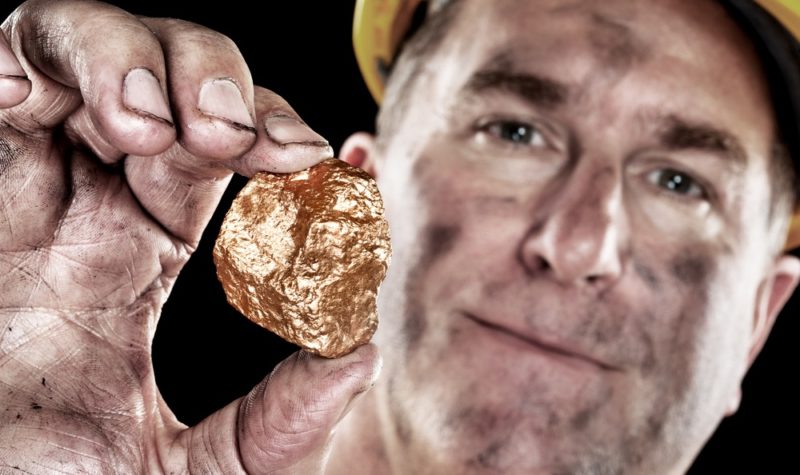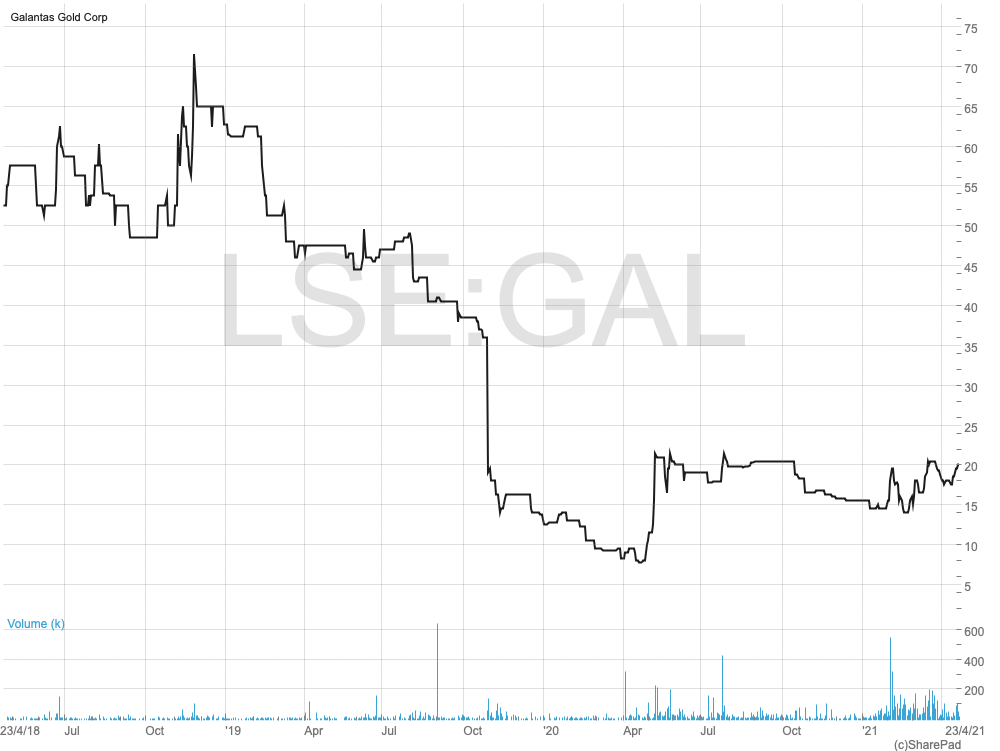Galantas Gold: successful fundraise will kick start production – and the shares

Veteran mining analyst John Cornford reviews some of the more interesting plays in the junior mining sector. Today’s pick is Galantas Gold, which is looking to kick start production in Northern Ireland.
I flagged Galantas Gold (LON:GAL) last July as a potentially very profitable situation, provided it could get funding to start underground mining at its so-far small Cavanacaw gold mine in Co Tyrone, Northern Ireland. Yesterday, it announced it is close to achieving just that, with an over-subscribed £4.5m placing (at the equivalent of 16.5p) to get the mine into full production, with experienced management coming aboard to replace what was almost a ‘caretaker’ one. Very much under investors’ radar after a long history of delays not of its own making – but supported all along by some key institutions and Canada’s ace gold investor Ross Beaty – GAL looks capable of more than doubling its share price over the next few months, and considerably more later.

Followers of the ‘Celtic Gold’ story will know that Scotland and Ireland (and to a lesser extent Wales) host a high-grade gold trend which was originally one long geological feature extending from Norway to Newfoundland before they were parted by the opening of the Atlantic Ocean. Gold grades well above 10g/tonne are common and have led to mines being developed now including the 2Moz Cononish mine in Scotland owned by Scotgold, and the 6Moz Curraghinault project not far from Cavanacaw, owned originally by Canada’s Dalradian Resources and now by Orion Mine Finance after a £200m take-over.
Cavanacaw was the first Celtic mine to be developed in the 1990s, as a small operation with an open pit, since when its ambition to expand by going underground has been frustrated, firstly by long drawn-out planning appeals eventually resolved in Galantas’ favour, and because until recently the NI Police force couldn’t guarantee the necessary steps to ensure explosives didn’t fall into the hands of terrorists.
With those obstacles out of the way, the next was the financial straits brought about by the delays. By last September, Galantas had a c.£5m working capital deficit and no means of funding its expansion. Most of the working capital deficit however comprises loans from Galantas’s long time CEO founder and 10.6% shareholder Roland Phelps, who is not likely to call them in, at least not in any way that endangers the company, so can be ignored for the moment.
That means the £4.5m funds being raised now will all be available for what, according to the most recent estimates in a 2014 PEA (Preliminary Economic Analysis) is the first year’s capital spending of £4.4m when, unlike many mining operations starting from scratch, operations will generate cash from the very start.
That PEA calculated that with gold resources amounting to 180,000 oz measured and indicated, and 342,000 oz inferred, a mining operation over 6 years would extract 130,000 gold ounces, peaking at an average 26,500 oz in years 3, 4, and 5.
More to the point, once the 1st year £4.4m capex has been made, payback would be very rapid. According to the 2014 PEA at a £800/oz price, first year gold revenue will equal operating costs, so that at today’s £1,275/oz, net cash of some £3.4m would be generated over and above that year’s capital investment.
In the second year, at a current £1,275/oz gold price (US$ 1,780/oz), £16.5m cash would be generated from operations, more than covering that year’s £6.3m capital spend, following which capital spend falls to only £935,000 over the next two years, whereas total cash to be generated in the remaining four-year mine life will amount to £77m.
So, it can be seen that the £4.5m being raised now can fairly be said to provide a really big kick-start to the whole project, and that is why Galantas’s long-term backers and any new investors coming in now have been so keen to participate.
On 2014 costs and the then £800/oz gold price, the PEA calculated a £19.2m NPV8 and a very high 95% return on investment, and those figures are the only ones still, officially, in the market.
I don’t know of any analysts’ up-to-date forecasts, but today’s new investors will certainly have been given up-to-date figures. My own estimate is that, today, the NPV would be very much higher, with an extra £58.6m bottom line revenue after smelter costs worth, over six years, another £44m NPV8 – to make a £63.2m total. If today’s costs (both operating and capital) are 15% higher than those calculated in 2014, that NPV would be diminished by £8m.
This kick-start is being achieved at the cost of adding an immediate 26.7m shares to the 46.6m GAL shares in issue last December, bringing the total to 73.3m. A further 26.7m warrants are being issued as part of the placing exercisable at 22p, which will raise another £5.5m, available for the exploration which Galantas thinks can add considerably to its current gold resource.
On those figures, the NPV per share most investors go by is currently around 86p per share at an 8% discount rate. But readers will know that I think that, for most mining projects, NPVs are an unrealistic way to forecast its share price. In this case, however, it might be conservative, if only because the return is over only six years, while an 8% discount rate looks too high for a project inside the UK, where a more realistic 5% would almost double the NPV again.
In any case, for any project, what influences the share price more is the near-term year-by-year cash flow. My calculations, based on the detailed annual figures in the 2014 PEA, adjusted for a £1,275/oz current gold price against the £800/oz used there, show the following profile for the net cash generated, before (the small) capital spending, year by year.
From year 1 to year 6 they are, respectively, £3.4m, £16.1m, £22.5m, £21.4m, £22.8m, and £11.5m.
On the approximately 100m shares in issue assuming all warrants and options are exercised, cash flow per share becomes 3.4p, 16.1p, 22.5p, 21.4p, 22.8p, and 11.5p.
My figures stand to be more accurately updated, particularly in light of a revision to the PEA being conducted now, based on drilling results since 2014. It is understood to show more resources, although costs will obviously be higher, for which I have already made an estimate that 15% higher costs would diminish the NPV by 12.5%. The figures don’t allow also for the c£5m working capital deficit which will have to be recouped at some stage.
But against those figures, and the chance that exploration spending will enhance the resource, lengthen the mine life, and possibly step up annual production, a current 20p share price is surely much too cheap.
As to whether the plan will go without a hitch, some investors might be influenced by Scotgold’s problems getting its Cononish mine into operation while others have been disillusioned by GAL’s many years of delay, and consequent share dilution through cash raises. But Cavanacaw has been operating for a long time with all necessary infrastructure already in place, so that the prospect of getting immediately into full production has now attracted new management with a highly experienced background in Canadian mining. (GAL is registered in Canada.)
We will have to wait for the placing to close (no date as yet) before knowing the new share register. But free float is likely to stay as low as it has been, with major investors including fund managers Melquart Ltd and Premier Miton holding 55% of the shares up to now, and Ross Beaty and CEO Roland Phelps another 18% or so. In addition is gold trading group Ocean Partners Ltd which has is also stepping up an off-take agreement for the gold concentrate that Cavanacaw will produce. So private investor demand will almost certainly make for a strong share performance once the placing completes.
Comments (0)